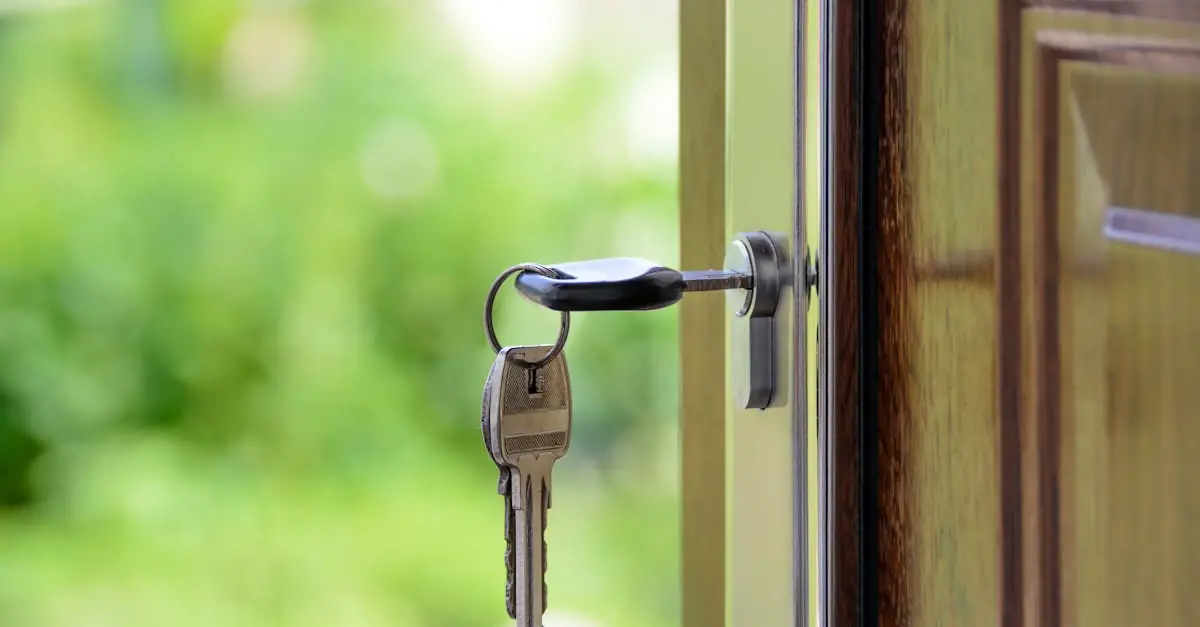Home improvement projects can feel like a joyride—until you hit a pothole. Whether it’s a DIY disaster or a contractor mishap, one thing’s for sure: unexpected costs can pop up faster than a surprise visit from your in-laws. That’s where home improvement insurance comes into play, acting like a safety net for your wallet.
Imagine transforming your cozy abode into a dream home, all while knowing you’re covered if things go awry. With the right insurance, you can tackle that kitchen remodel or bathroom overhaul without the fear of financial ruin. So grab your toolbelt and let’s dive into the world of home improvement insurance, where peace of mind meets home sweet home.
Table of Contents
ToggleWhat Is Home Improvement Insurance?
Home improvement insurance serves as a protective measure for homeowners during renovation projects. It addresses potential financial risks associated with renovations like kitchen and bathroom upgrades. Coverage may include protection against accidents, property damage, or liability claims arising from contractors working on the home.
This type of insurance generally falls under a homeowner’s existing policy or is available as a standalone product. Policies typically cover materials and labor costs should an accident occur. Home improvement insurance also provides peace of mind, knowing that unexpected issues will not derange project budgets.
Certain factors influence the cost of home improvement insurance. These factors include the home’s location, the specific renovations planned, and the overall value of the property. Homeowners should review multiple providers to find coverage that suits their needs and budget.
Additionally, ensuring contractors carry their own insurance protects homeowners further. Verification of their coverage reduces the risks associated with using unlicensed or uninsured workers. Taking such precautions helps avoid future financial setbacks during any home improvement journey.
Investing in home improvement insurance ultimately safeguards not just financial assets but also enhances the renovation experience. Homeowners focusing on improving their living spaces should prioritize securing comprehensive insurance coverage before commencing any projects.
Types of Home Improvement Insurance
Home improvement insurance encompasses several types tailored to specific needs during renovation projects. Understanding these types helps homeowners select suitable coverage.
General Liability Insurance
General liability insurance protects homeowners against claims arising from accidents or injuries occurring on their property during renovations. This insurance covers medical expenses, legal fees, and property damage claims. Contractors often carry general liability insurance, safeguarding homeowners against potential liabilities stemming from their work. It’s crucial for homeowners to verify that their contractor holds this insurance to mitigate risks effectively. Policies typically vary in coverage limits based on the project scope and cost; thus, assessing needs beforehand is important.
Builder’s Risk Insurance
Builder’s risk insurance covers properties under construction or renovation, protecting them from various risks. This coverage includes damage from fire, theft, vandalism, and other disasters impacting the construction site. Homeowners often need this insurance for extensive renovations, encompassing both materials and labor risks. Coverage duration lasts until project completion, ensuring adequate protection throughout the renovation timeline. Comparing builder’s risk insurance providers is essential for homeowners to find policies that align with their project requirements and budget.
Benefits of Having Home Improvement Insurance
Home improvement insurance offers critical advantages for homeowners embarking on renovation projects. This coverage not only safeguards financial investments but also contributes to a smoother renovation experience.
Financial Protection
Financial protection represents one of the primary benefits of home improvement insurance. Costs associated with accidents, property damage, or contractor liability can accumulate quickly. This insurance helps to cover various expenses, including labor costs and materials, if unexpected issues arise during a remodeling project. For example, if a fire damages a newly remodeled kitchen, homeowners can rely on their insurance to mitigate losses. Small investments in insurance can save significant amounts of money in the long run, ensuring vital protections are in place. Comparing policies from multiple providers aids in finding suitable coverage that aligns with budget and project scope.
Peace of Mind
Peace of mind stands as another significant advantage of home improvement insurance. Knowing that protections are in place allows homeowners to focus on renovation tasks without constant worry about potential setbacks. This assurance fosters a more positive renovation experience. Homeowners can confidently choose contractors, understanding that liability is minimized when proper insurance is in place. Additionally, thorough verification of contractors’ insurance offers extra safety, decreasing the likelihood of unexpected costs. Overall, home improvement insurance plays a crucial role in enhancing comfort during renovations, enabling homeowners to elevate their living spaces with confidence.
Finding the Right Coverage
Choosing the suitable home improvement insurance requires careful consideration of various factors. Homeowners must evaluate their project’s scope to determine what type of coverage is necessary. General liability insurance is critical for protecting against accidents and injuries on the property during renovations. Confirming that contractors hold this coverage minimizes financial risks.
Builder’s risk insurance offers protection specifically for properties under renovation. It covers risks like theft, fire, and vandalism until the project reaches completion. Selecting a policy that meets specific project needs ensures comprehensive protection throughout the renovation process.
Comparing multiple insurance providers aids homeowners in finding optimal coverage. A homeowner’s location, planned renovations, and property value greatly influence insurance costs. Assessing these factors helps in selecting appropriate protection without overspending.
In addition, homeowners should consider combining policies for better rates and coverage options. Bundling existing home insurance with home improvement coverage can yield discounts. Exploring policy specifics assists in understanding what is included, such as labor and materials.
Reading reviews and seeking recommendations from others can provide insights on reliable insurance providers. Prioritizing comprehensive coverage safeguards against unexpected expenses during renovations. Staying informed on the latest insurance options enhances decision-making skills for homeowners.
Finally, homeowners are encouraged to review their coverage regularly. Changes in projects or property value may necessitate adjustments in policy terms. Maintaining adequate coverage ensures ongoing protection throughout the renovation journey.
Common Exclusions to Consider
Home improvement insurance typically covers a range of risks, but several common exclusions exist that homeowners should recognize. Pre-existing damage often falls outside coverage, leaving homeowners responsible for any upfront repair costs. Furthermore, normal wear and tear, such as aging roofs or outdated plumbing, usually isn’t covered since these issues arise gradually.
Homeowners should note that certain types of renovations may also face exclusions. For example, insurance might not cover projects that involve hazardous materials, such as asbestos removal or lead paint abatement. Similarly, any unpermitted work performed without proper inspections may not receive coverage during claims.
Natural disasters present another area of concern. Many home improvement insurance policies exclude coverage for damages due to floods, earthquakes, or other acts of nature, requiring separate policies or endorsements for protection. Additionally, personal property losses related to renovations could also face limitations, particularly if items are stolen or damaged during the renovation process.
Contractor-related issues also lead to exclusions. If a homeowner undertakes renovations without verifying that the contractor holds the necessary insurance, any accidents resulting from the contractor’s work may not qualify for coverage. Established contractors provide proof of insurance, emphasizing the importance of due diligence.
Lastly, intentional damage or gross negligence does not gain coverage under most policies. Homeowners should keep in mind that any damages that result from reckless behavior or deliberate actions are outside the policy’s scope.
Understanding these exclusions allows homeowners to mitigate risks effectively. Reviewing policy details before renovation projects ensures appropriate coverage and aligns expectations accordingly.
Home improvement insurance is essential for homeowners looking to undertake renovation projects. It provides a crucial safety net against unexpected costs and risks that may arise during renovations. By securing the right coverage, homeowners can focus on transforming their spaces without the stress of potential financial setbacks.
Evaluating different policies and understanding the specific needs of a project can lead to better protection and peace of mind. Homeowners should also ensure that their contractors are adequately insured to further minimize risks. With the right insurance in place, the journey of home improvement can be both rewarding and secure.




